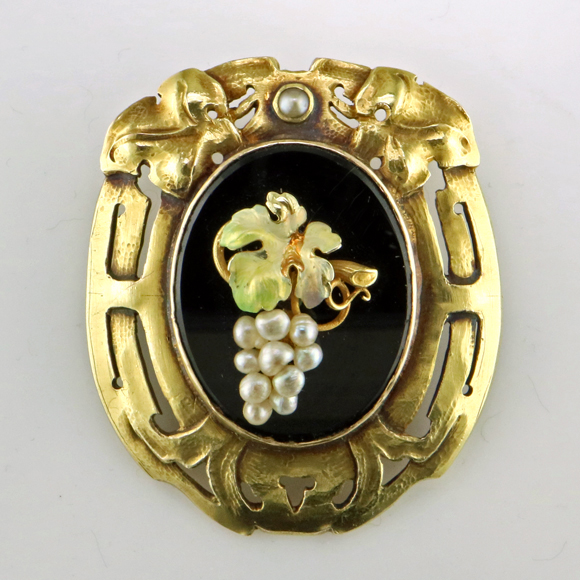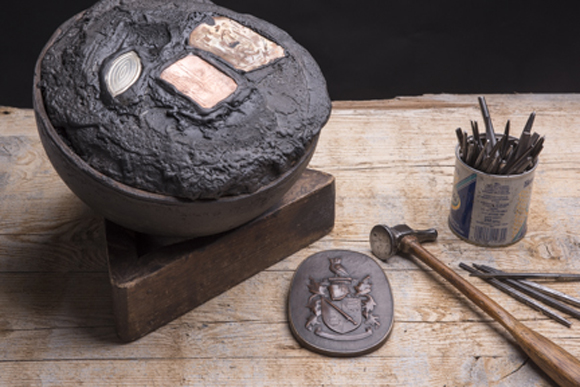
Custom engagement ring by Mardon, with a lab-grown diamond center flanked by natural diamonds
We have nothing against lab-grown diamonds, lab-grown emeralds, or any of the lab-grown stones available today. Although the focus of our gem business is for naturally occurring gemstones mined from the Earth, we sell lab-grown stones occasionally. For some consumers, they are a great choice — for example, we made a ring with a lab-grown diamond for an engineering student who was fascinated by the technology that produces these stones. Where cost is an issue, a fine lab-grown emerald, while not cheap, is about 1/10 the cost of a fine natural emerald from the mines of Colombia. The crucial thing is that you, as a consumer, know and understand what you are buying.
According to the April 5 issue of National Jeweler, a respected jewelry trade journal, the Federal Trade Commission recently sent letters to eight companies warning them that their ads for lab-grown diamond jewelry or diamond simulants (CZ, moissanite) could be deceptive.

Last year, the FTC overhauled the Jewelry Guides, its rulebook for the jewelry industry that outlines the terms marketers should and shouldn’t use to describe and sell jewelry to consumers. These guide lines clearly state the following. (excerpted from National Jeweler 10X Blog by Michelle Graff, April 5, 2019)
1. Importantly, according to the 2018 Guidelines, “when ‘diamond’ appears by itself, it can only refer to a natural diamond mined from the Earth.”
The big differences in value make these names and descriptions very important for consumers, so that they are truly aware of what they are purchasing. Currently, lab-grown diamonds sell for about 1/2 the price of natural diamonds. If trends match what we’ve seen with natural emerald versus lab-grown emerald and other natural gems vs. their lab-grown counterparts, lab-grown diamonds will sell in the future for 1/10 the price of mined diamonds.
This just makes sense. Natural mined gems are rare gifts of nature, available only in limited supply, especially in larger sizes and finer qualities. These diamonds are valued based on their rarity, as well as their beauty and durability.
Lab-grown stones can be produced in large quantity, so rarity is not a factor. With prices for lab-grown diamonds at their current level, producers are scrambling to cash in. The supply of lab-grown diamonds will inevitably exceed demand, with consequent price drops.
Consumers who pay thousands of dollars per carat for lab-grown diamonds today may be dismayed to find the same product available in a few years for hundreds of dollars per carat.
2. If a product is a lab-grown diamond, the the fact that it is man-made must be clearly and conspicuously stated.
FTC recommends these man-made products be described as laboratory-grown, laboratory-created, or (manufacturer name)-created, and these terms must be “immediately accompanied, with equal conspicuousness” by one of these terms: it cannot stand alone. The term cultured must meet the same standard.
FTC staff found that “some businesses only put information on how a stone was really made on a ‘diamond education’ webpage, rather than in or near an ad where shoppers were more likely to see it.”
On some social media sites, using a hashtag for this disclosure isn’t adequate — e.g. #labgrown may not meet the “clear and conspicuous” guideline. FTC researchers also found instances on social media where hashtags such as #diamond might imply that a lab-grown diamond is the same as a mined diamond.
3. CZ and moissanite aren’t the same thing as diamond, and that must be clear too.
Ads for these products, properly referred to as simulated or imitation diamonds, must avoid describing the products in a way that “falsely implies” what they are selling has the same optical, physical and chemical properties as mined or lab-grown diamonds.
The physical hardness, transparency, and optics of natural and lab-grown diamonds are what make them so beautiful, sparkly and durable. CZ and moissanite don’t match these properties, so they can never look the same and won’t stand up to wear in the same way.
4. “Eco” claims, such as “eco-friendly, eco-conscious, or sustainable” shouldn’t be used without explaining exactly what they mean.
“Eco” consciousness and the related concepts of “sustainability and ethical sourcing” have become important considerations for many consumers about the things they purchase and consume. It’s too easy for marketers to cross the line with unsubstantiated claims to take advantage these legitimate concerns.
For example, if a company is claiming it’s product is “eco-friendly” because it’s recyclable or uses less resources, or that it’s “green” because it is “carbon neutral,” the FTC says ads should contain publicly available and/or scientific evidence backing up these claims.
While the FTC release did not name names, the April 3 edition of the New York Post singled out Leonardo DiCaprio-backed company, the Diamond Foundry as one of the recipients of the above mentioned letters. According to the Post, the FTC expressed concerns in it’s letter to the Diamond Foundry.







































